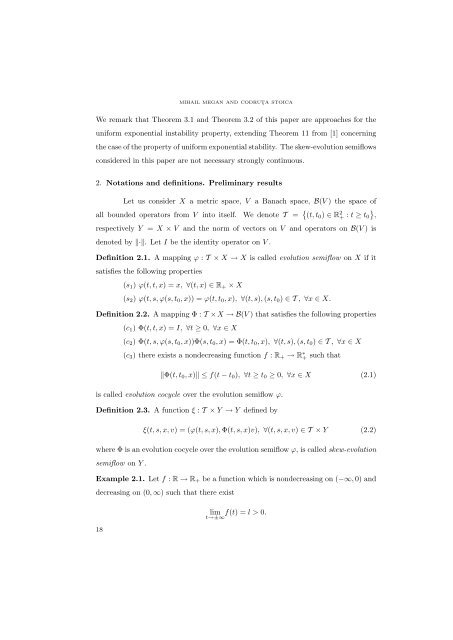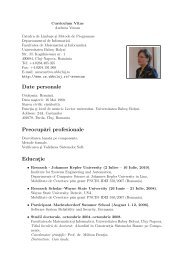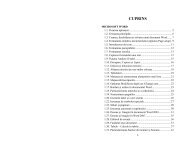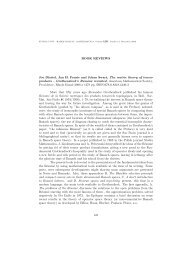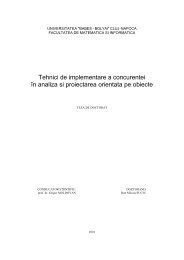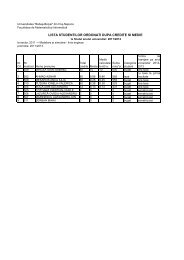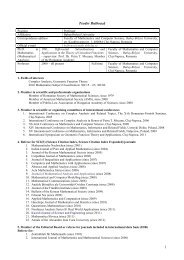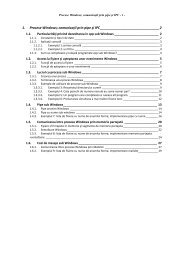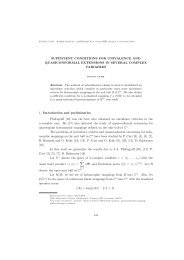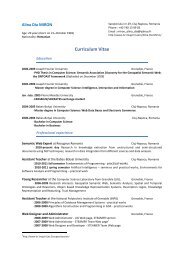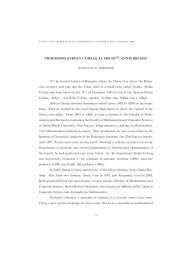EXPONENTIAL INSTABILITY OF SKEW-EVOLUTION ... - UBB Cluj
EXPONENTIAL INSTABILITY OF SKEW-EVOLUTION ... - UBB Cluj
EXPONENTIAL INSTABILITY OF SKEW-EVOLUTION ... - UBB Cluj
You also want an ePaper? Increase the reach of your titles
YUMPU automatically turns print PDFs into web optimized ePapers that Google loves.
MIHAIL MEGAN AND CODRUT¸ A STOICA<br />
We remark that Theorem 3.1 and Theorem 3.2 of this paper are approaches for the<br />
uniform exponential instability property, extending Theorem 11 from [1] concerning<br />
the case of the property of uniform exponential stability. The skew-evolution semiflows<br />
considered in this paper are not necessary strongly continuous.<br />
2. Notations and definitions. Preliminary results<br />
Let us consider X a metric space, V a Banach space, B(V ) the space of<br />
all bounded operators from V into itself. We denote T = � (t, t0) ∈ R2 �<br />
+ : t ≥ t0 ,<br />
respectively Y = X × V and the norm of vectors on V and operators on B(V ) is<br />
denoted by �·�. Let I be the identity operator on V .<br />
Definition 2.1. A mapping ϕ : T × X → X is called evolution semiflow on X if it<br />
satisfies the following properties<br />
(s1) ϕ(t, t, x) = x, ∀(t, x) ∈ R+ × X<br />
(s2) ϕ(t, s, ϕ(s, t0, x)) = ϕ(t, t0, x), ∀(t, s), (s, t0) ∈ T , ∀x ∈ X.<br />
Definition 2.2. A mapping Φ : T ×X → B(V ) that satisfies the following properties<br />
(c1) Φ(t, t, x) = I, ∀t ≥ 0, ∀x ∈ X<br />
(c2) Φ(t, s, ϕ(s, t0, x))Φ(s, t0, x) = Φ(t, t0, x), ∀(t, s), (s, t0) ∈ T , ∀x ∈ X<br />
(c3) there exists a nondecreasing function f : R+ → R ∗ + such that<br />
�Φ(t, t0, x)� ≤ f(t − t0), ∀t ≥ t0 ≥ 0, ∀x ∈ X (2.1)<br />
is called evolution cocycle over the evolution semiflow ϕ.<br />
Definition 2.3. A function ξ : T × Y → Y defined by<br />
ξ(t, s, x, v) = (ϕ(t, s, x), Φ(t, s, x)v), ∀(t, s, x, v) ∈ T × Y (2.2)<br />
where Φ is an evolution cocycle over the evolution semiflow ϕ, is called skew-evolution<br />
semiflow on Y .<br />
Example 2.1. Let f : R → R+ be a function which is nondecreasing on (−∞, 0) and<br />
decreasing on (0, ∞) such that there exist<br />
18<br />
lim f(t) = l > 0.<br />
t→±∞


